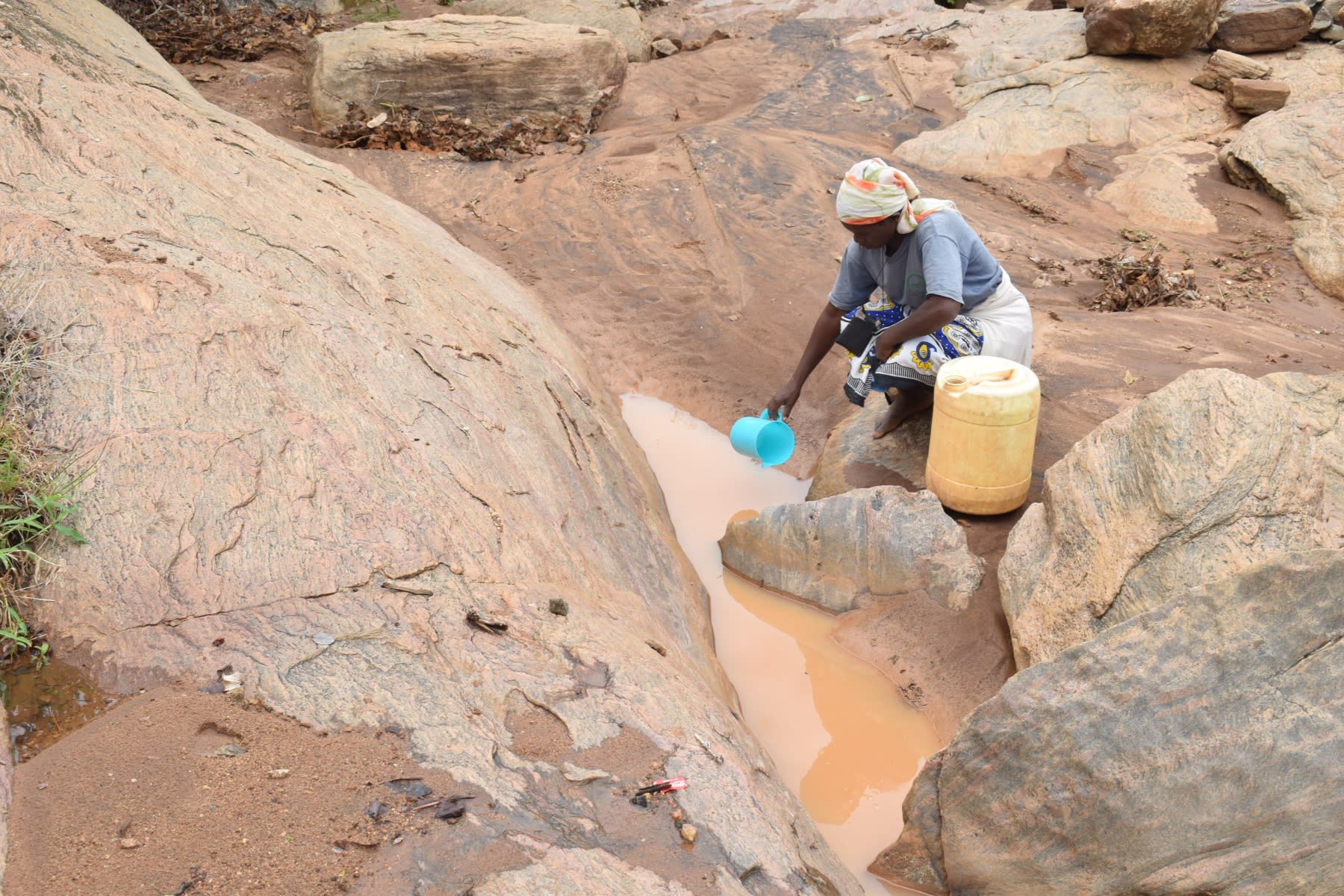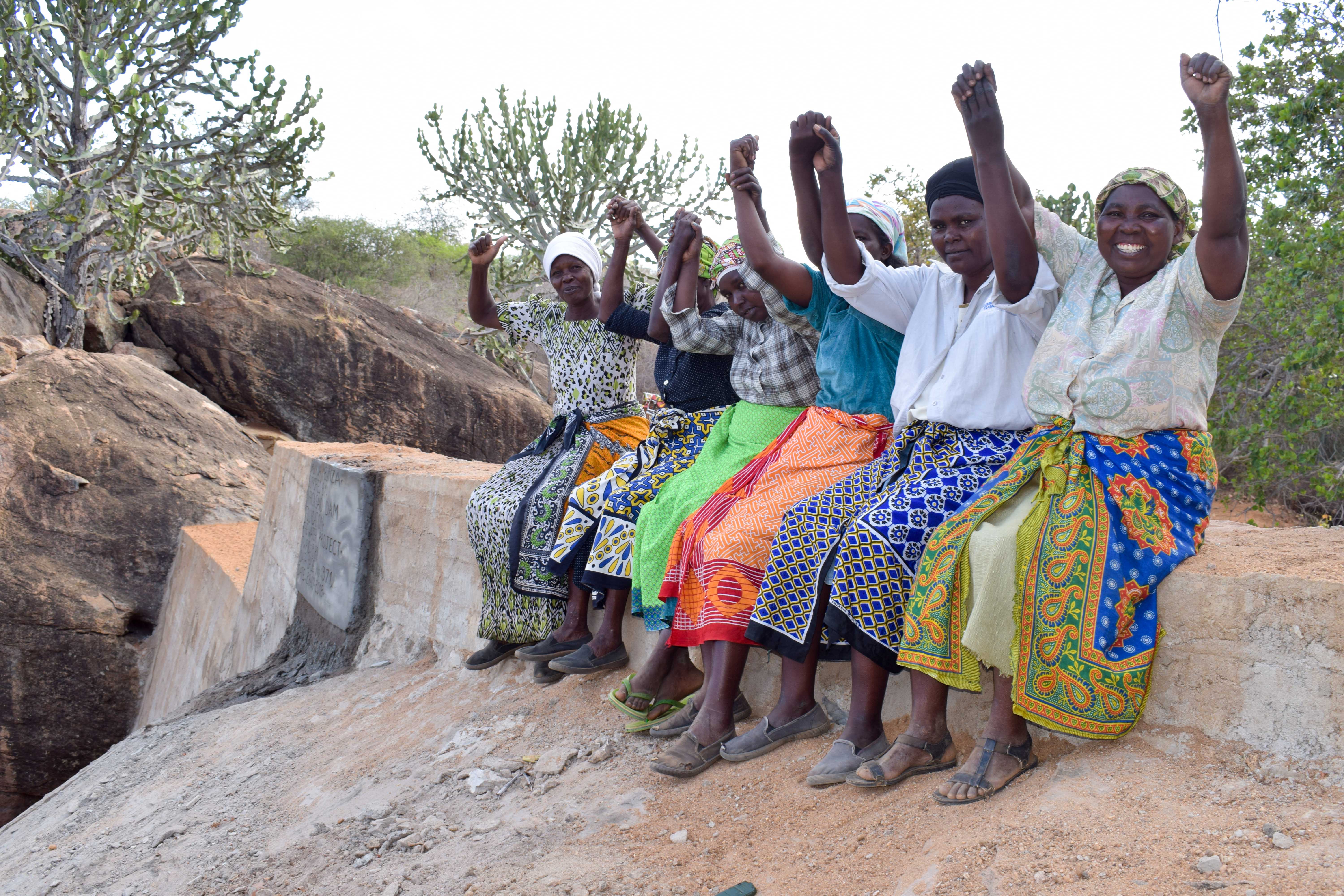People living in Ikuusya Community have to travel more than two miles to collect water from the closest riverbed. They must dig through the sand to scoop murky water from a hole, fill their containers, and make the return journey home - this time with the added weight of water.
The journey is made easier for those who own a donkey. The elderly who cannot complete the task must resort to paying other people to fetch water for them.
All of this effort is undertaken to bring home water that is unsafe. The water containers don't even have covers, so water is succeptible to further contamination on the way home. The majority of people are using this water without any form of treatment.

A consequence of water scarcity is a reduced level of hygiene and sanitation. Roughly three-quarters of households have latrines, but none of the households we visited had water nearby to use for handwashing.
"The majority of people in our area want to lead decent lives, with high levels of hygiene and sanitation. However, water challenges in our community have led to poor levels of cleanliness at the household level," Mrs. Mwikali Kimeli, a local farmer, said to us.
The Kwa Mbunza Self-Help Group heard about our work from neighboring groups. They got in contact with our field officer Patrick and expressed their intention to partner with us to improve access to safe water in their community.
Most people here rely on farming or casual labor as their source of income. However, some are employed in formal jobs and others conduct petty trade to make a living.
The community is found in a peaceful remote rural village with the characteristic indigenous dry-land tree species forming the majority of the vegetation cover. The majority of individual houses are mud made and grass thatched with others made of bricks and iron sheets.
What we can do:
Our main entry point into Ikuusya Community has been the Kwa Mbunza Self-Help Group, which is comprised of farming households that are working together to address water and food scarcity in their region. These members will be our hands and feet in both constructing water projects and spreading the message of good hygiene and sanitation to everyone.
Training
We’re going to train self-help group members and their communities on hygiene and sanitation practices. Not every household has a pit latrine, so we need to explain the importance of this facility. Some of the latrines we were able to observe were very poorly constructed, so we are concerned they will collapse and sink when the rare burst of rain occurs. We will continue to encourage improvement here, especially when it comes to daily cooking habits, personal hygiene, water hygiene and its treatment, and handwashing.
Sand Dam
Building this sand dam at a spot further down the river in Ikuusya will bring water closer to hundreds of other people. After the community picked the spot, our technical team went in and proved the viability by finding a good foundation of bedrock. Now, our engineers are busy drawing up the blueprints. We estimate the dam will be 12.3 meters long and 3.1 meters high.
We are unified with this community to address the water shortage. As more sand dams are built, the environment will continue to transform. As the sand dams mature and build up more sand, the water tables will rise. Along with these sand dams, hand-dug wells (check out the hand-dug well being installed next to this dam) will be installed to give locals a good, safe way to access that water.
With these projects, clean water will be brought closer to hundreds of people.

 Sand Dam
Sand Dam
 Rehabilitation Project
Rehabilitation Project






























